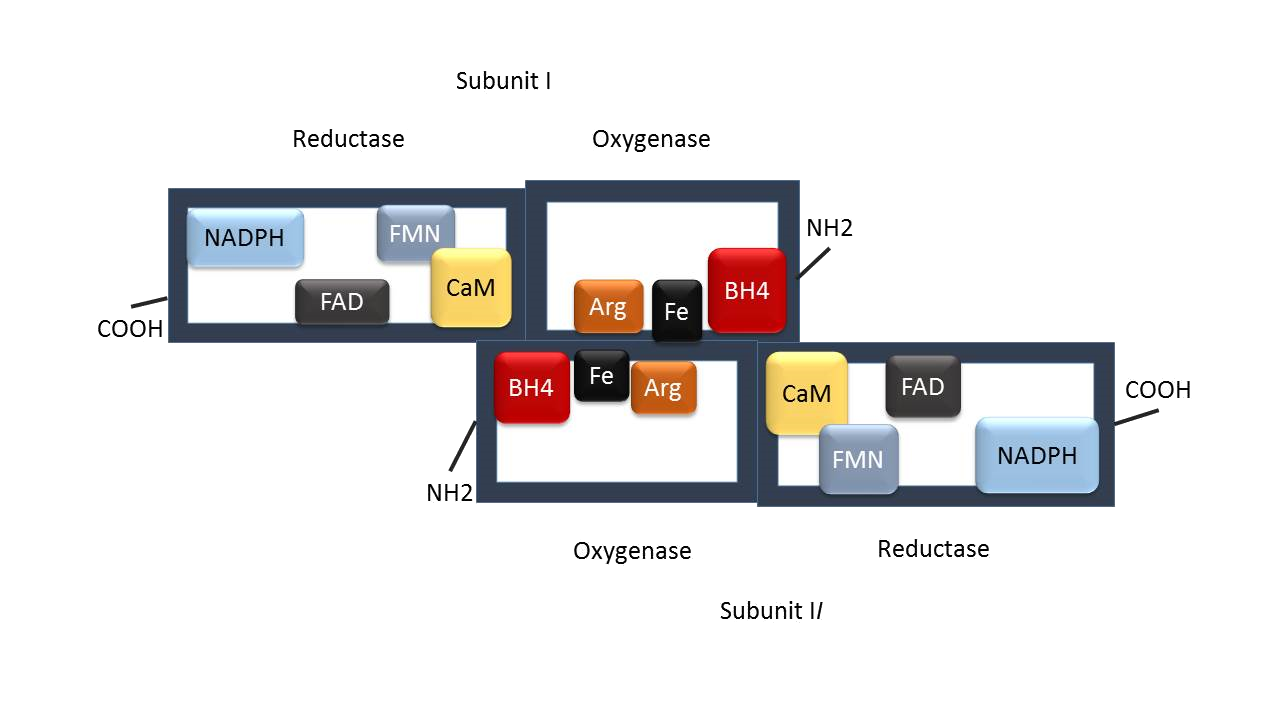Nitric oxide synthesizing NOS enzymes
NOS is an enzyme that catalyses catalyses NO biosynthesis via a reaction involving the conversion of L-arginine to L-citrulin. Nitric oxide is a major factor in the cardiovascular system. It plays multiple roles including: regulation of vasomotor tone, cell adhesion to the endothelium, inhibition of platelet aggregation, vascular smooth muscle cell proliferation, cell cycle. This list at a first glance would appear to suggest that NO is a crucial factor in preventing cardiovascular damage such as atherosclerosis. The loss of endothelial-derived NO arising from endothelial dysfunction is indeed thought to be a major cause of such pathological conditions. Accordingly, immense research efforts are being made currently to understand the regulation, production, and functions of NO.
NOS enzyme acts as a dimer, consisting of two identical monomers, which can be divided into two major domains: a C-terminal reductase domain, and an N-terminal oxygenase domain (Fig. 10).

Figure10: Scheme of the domain structure of the NOS dimer, showing cofactor and substrate binding sites
Althoug the normal endothelial release of NO through eNOS reaction mediates physiological vasodilation, excessive release through iNOS induction may play a role in regulating blood pressure (BP), heart rate (HR) and endogenous antioxidants in septic shock. It is hypothesized that chronic NO-deficient hypertension and alteration in HR is associated with depletion of antioxidants and oxidative injury to the heart and exercise training (ET) normalizes the BP and HR by scavenging free radicals ROS through upregulation of cardiac NO and antioxidant systems. Previous studies have also demonstrated an enhanced release of endothelium-derived relaxing factor (e.g. NO) in the cardiovascular system of rats. The improvement in the cardiac functions (BP and HR) by training in rats is also related to increased blood flow and up-regulation of NOS in the cardiovascular system causing vasodilation of the vessels. The enhanced production of NO through eNOS activation may cause an increase in vascular endothelial growth factor (VEGF) and capillary density leading to enhanced blood flow and vasorelaxation in exercise conditioning. Low cardiac NO levels have been shown to induce positive contractile response of the heart and aorta, leading to an increase in HR and BP. NO can regulate both adenylyl cyclase and guanylyl cyclase in the heart and aorta and regulate the BP and HR.